EDUCATIONAL SYSTEM IN THE UK EDUCATIONAL SYSTEM IN


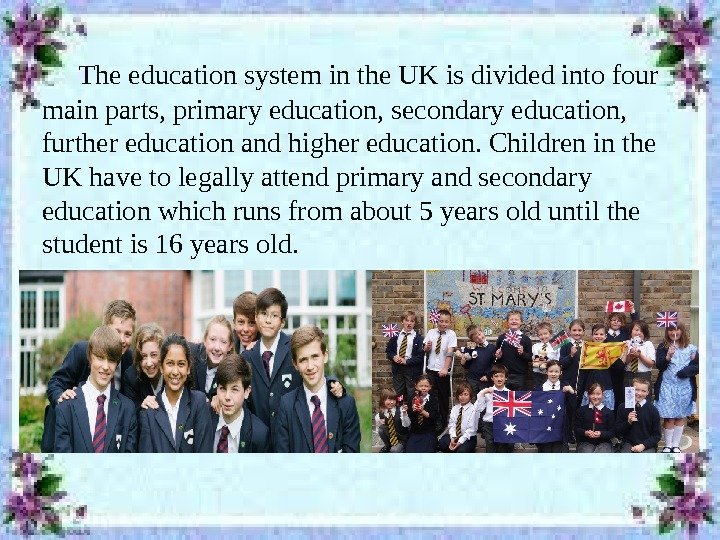
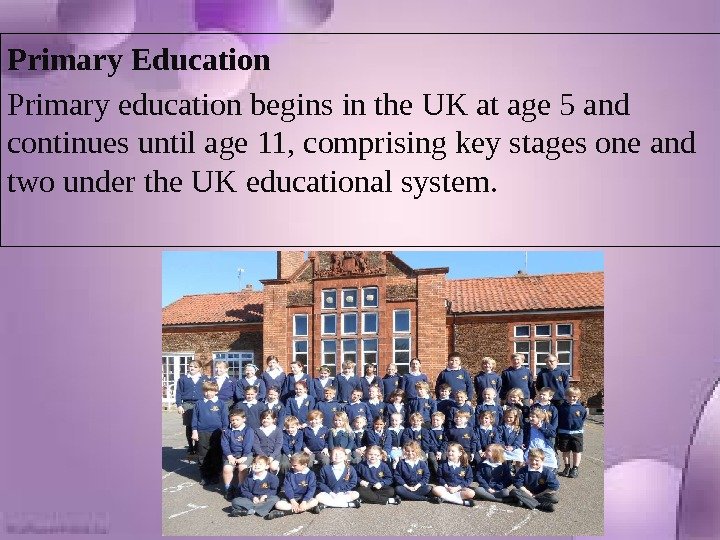
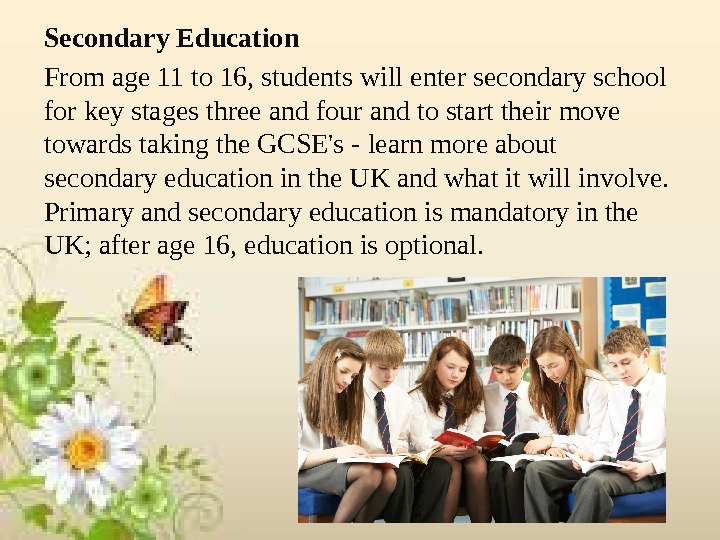
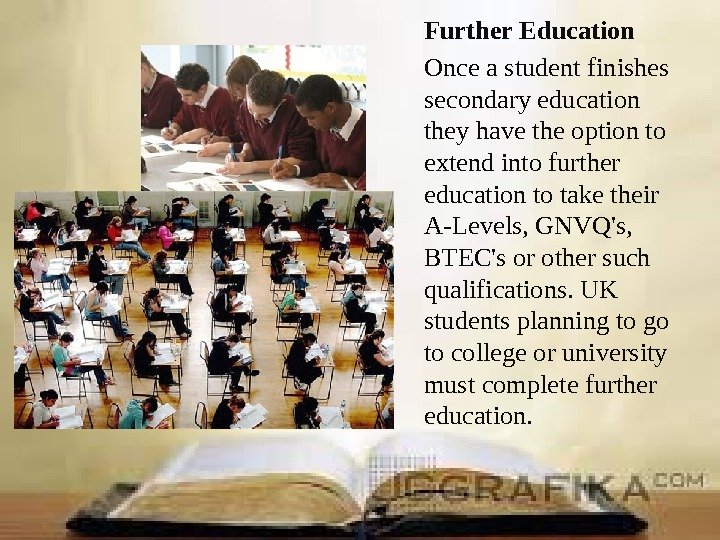
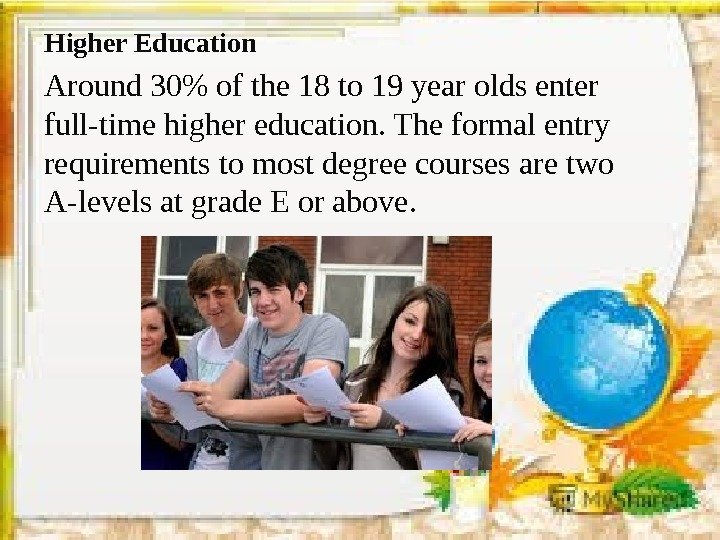
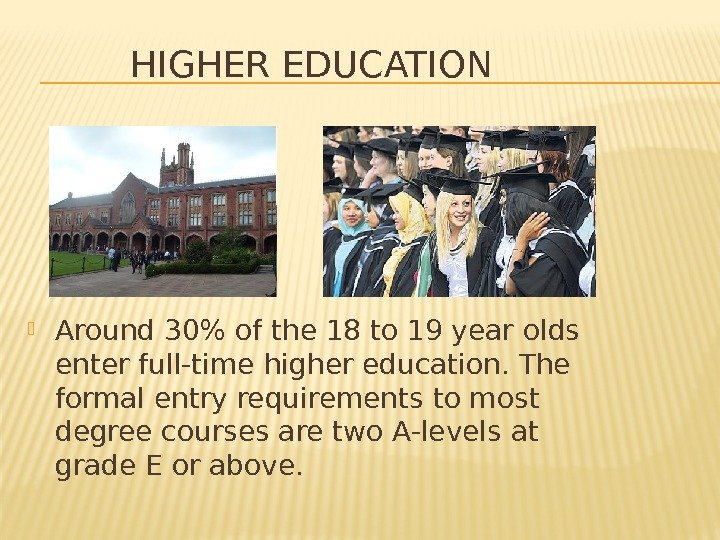
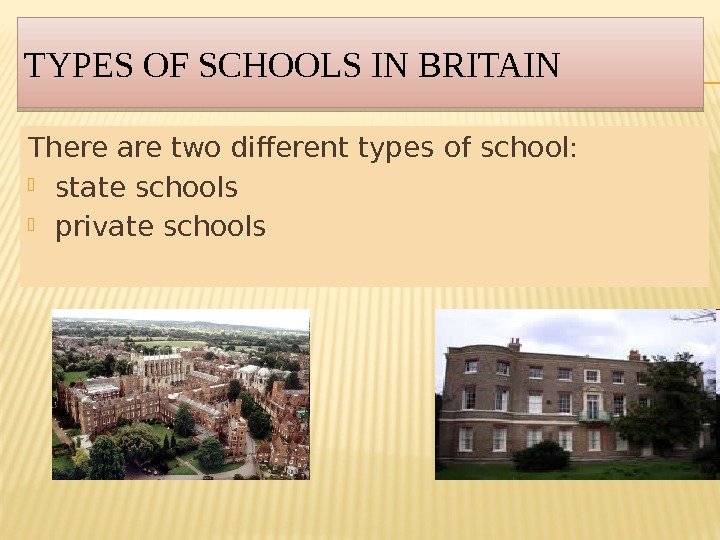
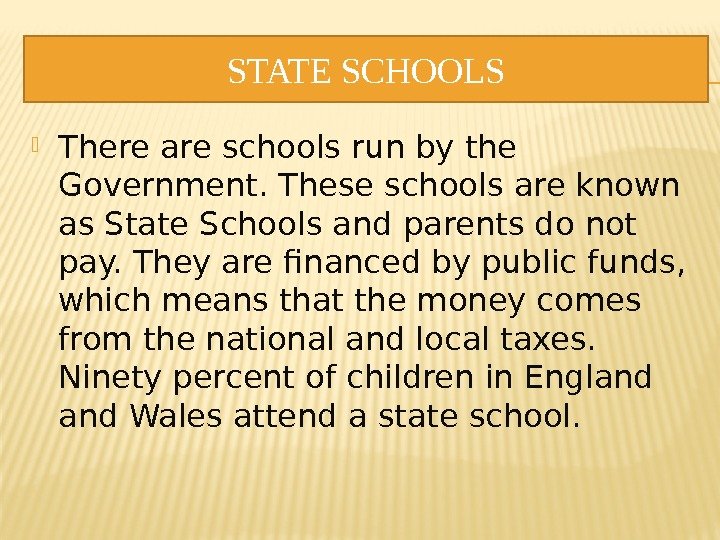
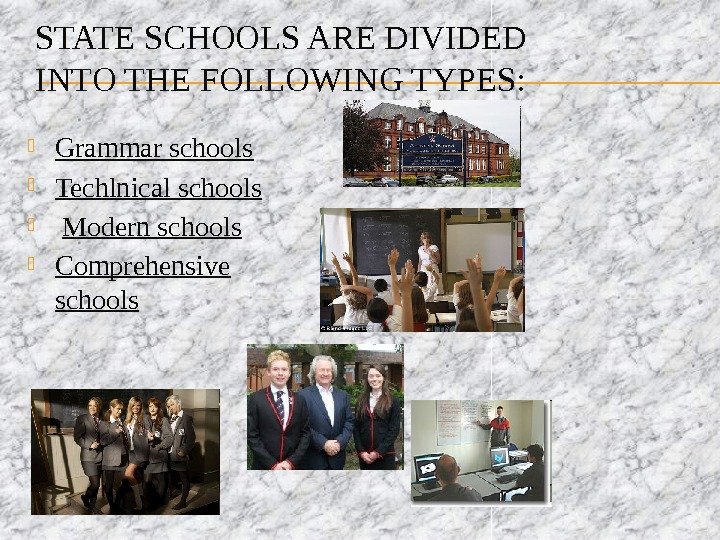
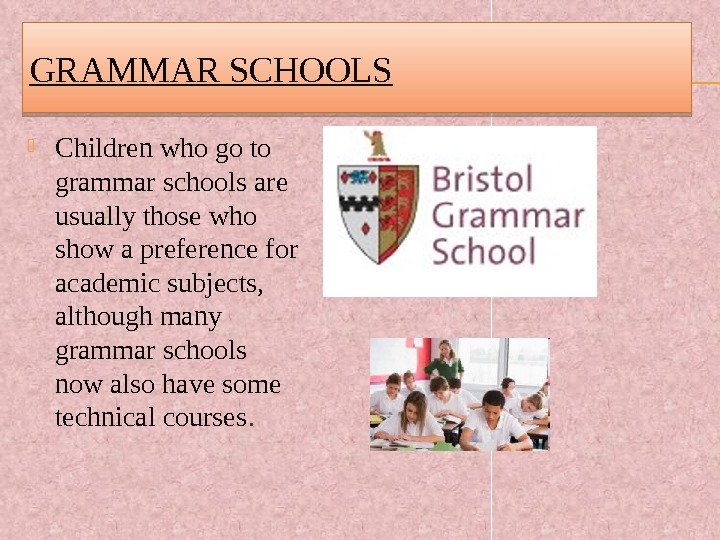
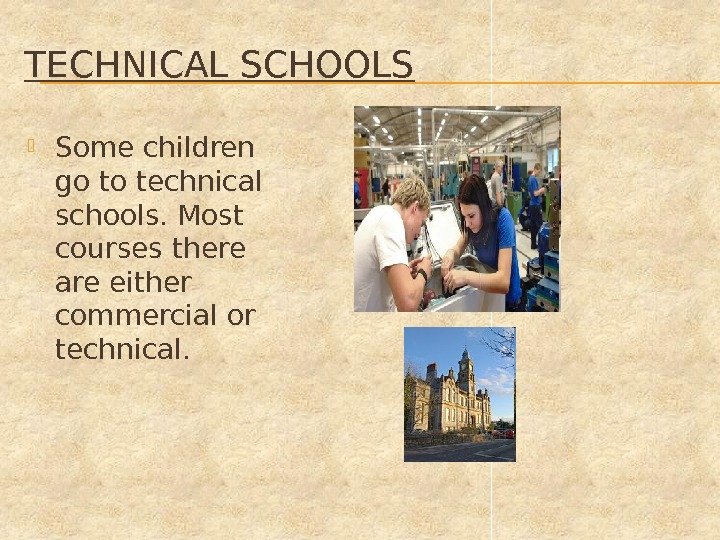
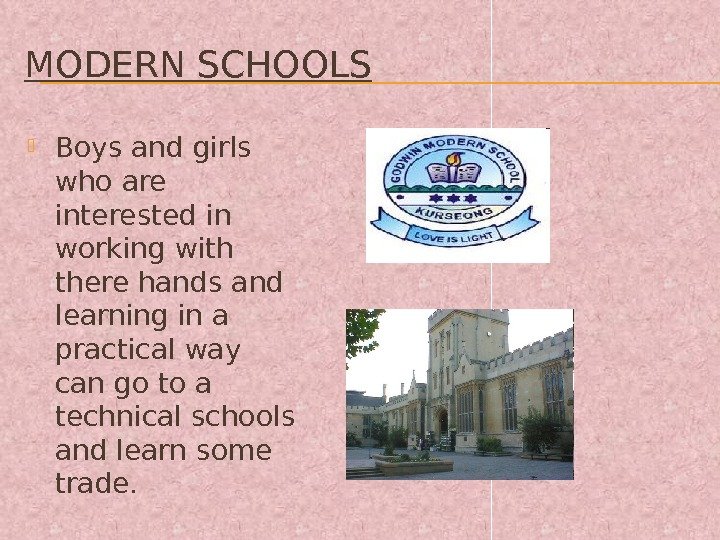

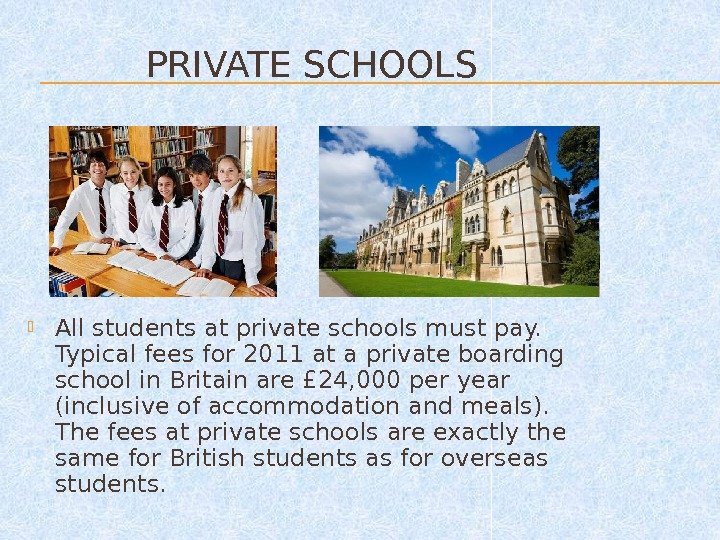
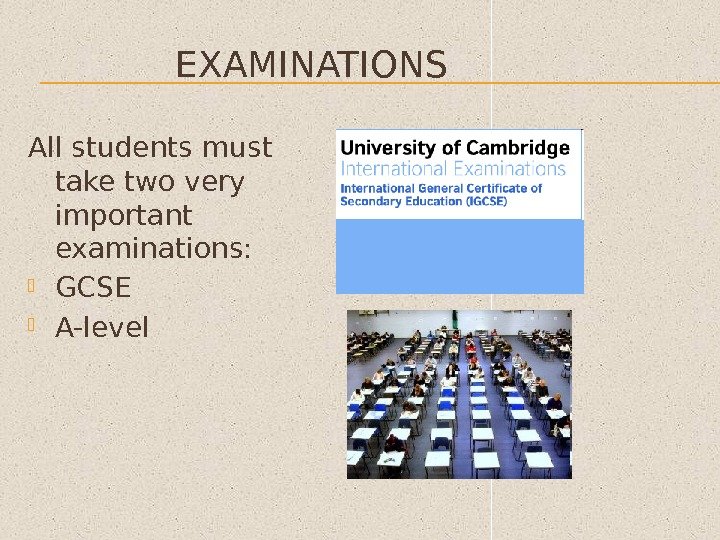
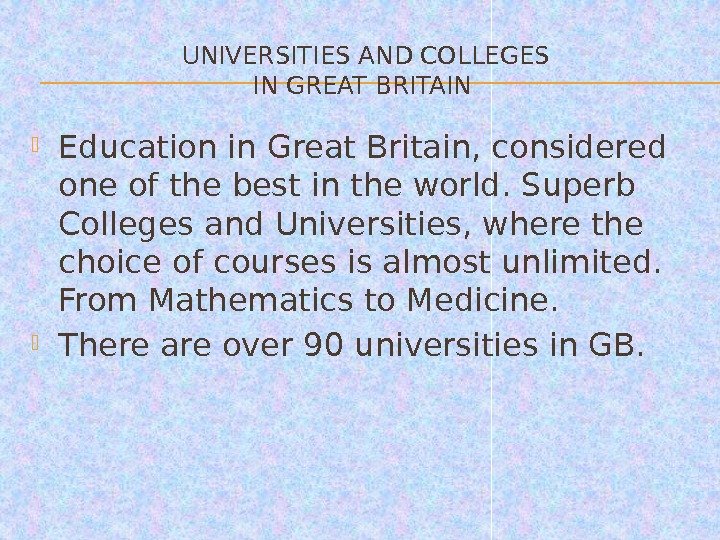
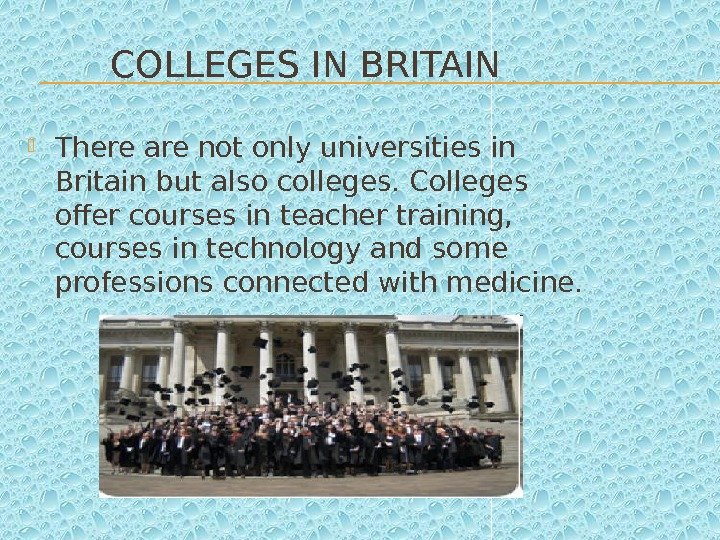
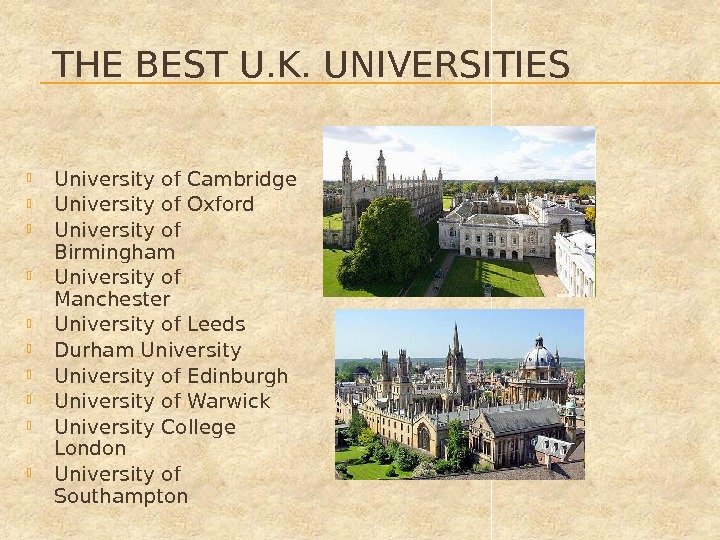
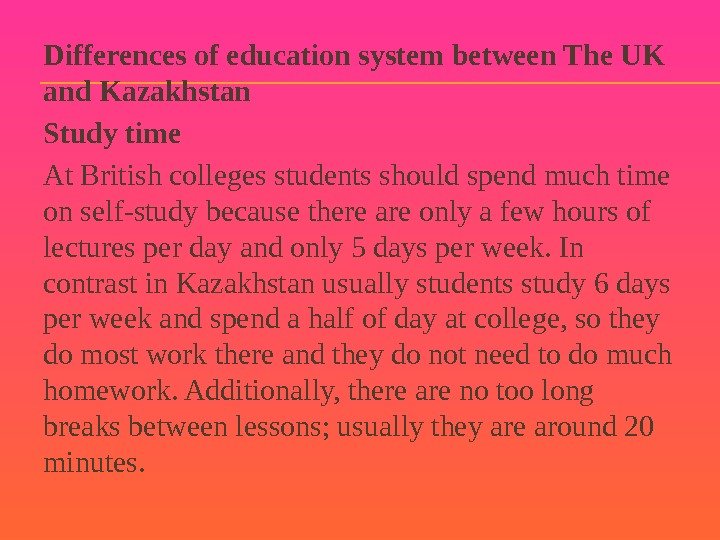
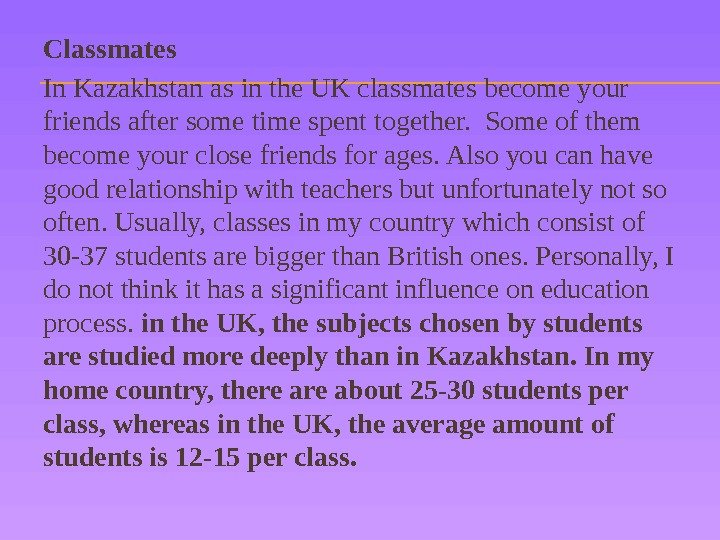

eltanu2.pptx
- Размер: 9.4 Мб
- Автор:
- Количество слайдов: 22
Описание презентации EDUCATIONAL SYSTEM IN THE UK EDUCATIONAL SYSTEM IN по слайдам
 EDUCATIONAL SYSTEM IN THE UK
EDUCATIONAL SYSTEM IN THE UK
 The education system in the UK is divided into four main parts, primary education, secondary education, further education and higher education. Children in the UK have to legally attend primary and secondary education which runs from about 5 years old until the student is 16 years old.
The education system in the UK is divided into four main parts, primary education, secondary education, further education and higher education. Children in the UK have to legally attend primary and secondary education which runs from about 5 years old until the student is 16 years old.
 Primary Education Primary education begins in the UK at age 5 and continues until age 11, comprising key stages one and two under the UK educational system.
Primary Education Primary education begins in the UK at age 5 and continues until age 11, comprising key stages one and two under the UK educational system.
 Secondary Education From age 11 to 16, students will enter secondary school for key stages three and four and to start their move towards taking the GCSE’s — learn more about secondary education in the UK and what it will involve. Primary and secondary education is mandatory in the UK; after age 16, education is optional.
Secondary Education From age 11 to 16, students will enter secondary school for key stages three and four and to start their move towards taking the GCSE’s — learn more about secondary education in the UK and what it will involve. Primary and secondary education is mandatory in the UK; after age 16, education is optional.
 Further Education Once a student finishes secondary education they have the option to extend into further education to take their A-Levels, GNVQ’s, BTEC’s or other such qualifications. UK students planning to go to college or university must complete further education.
Further Education Once a student finishes secondary education they have the option to extend into further education to take their A-Levels, GNVQ’s, BTEC’s or other such qualifications. UK students planning to go to college or university must complete further education.
 Higher Education Around 30% of the 18 to 19 year olds enter full-time higher education. The formal entry requirements to most degree courses are two A-levels at grade E or above.
Higher Education Around 30% of the 18 to 19 year olds enter full-time higher education. The formal entry requirements to most degree courses are two A-levels at grade E or above.
 HIGHER EDUCATION Around 30% of the 18 to 19 year olds enter full-time higher education. The formal entry requirements to most degree courses are two A-levels at grade E or above.
HIGHER EDUCATION Around 30% of the 18 to 19 year olds enter full-time higher education. The formal entry requirements to most degree courses are two A-levels at grade E or above.
 TYPES OF SCHOOLS IN BRITAIN There are two different types of school: state schools private schools
TYPES OF SCHOOLS IN BRITAIN There are two different types of school: state schools private schools
 STATE SCHOOLS There are schools run by the Government. These schools are known as State Schools and parents do not pay. They are financed by public funds, which means that the money comes from the national and local taxes. Ninety percent of children in England Wales attend a state school.
STATE SCHOOLS There are schools run by the Government. These schools are known as State Schools and parents do not pay. They are financed by public funds, which means that the money comes from the national and local taxes. Ninety percent of children in England Wales attend a state school.
 STATE SCHOOLS ARE DIVIDED INTO THE FOLLOWING TYPES: Grammar schools Techlnical schools Modern schools Comprehensive schools
STATE SCHOOLS ARE DIVIDED INTO THE FOLLOWING TYPES: Grammar schools Techlnical schools Modern schools Comprehensive schools
 GRAMMAR SCHOOLS Children who go to grammar schools are usually those who show a preference for academic subjects, although many grammar schools now also have some technical courses.
GRAMMAR SCHOOLS Children who go to grammar schools are usually those who show a preference for academic subjects, although many grammar schools now also have some technical courses.
 TECHNICAL SCHOOLS Some children go to technical schools. Most courses there are either commercial or technical.
TECHNICAL SCHOOLS Some children go to technical schools. Most courses there are either commercial or technical.
 MODERN SCHOOLS Boys and girls who are interested in working with there hands and learning in a practical way can go to a technical schools and learn some trade.
MODERN SCHOOLS Boys and girls who are interested in working with there hands and learning in a practical way can go to a technical schools and learn some trade.
 COMPREHENSIVE SCHOOLS These schools usually combine all types of secondary education. They have physic, chemistry, biology laboratories, machine workshops for metal and woodwork and also geography, history and art departments, commercial and domestic courses.
COMPREHENSIVE SCHOOLS These schools usually combine all types of secondary education. They have physic, chemistry, biology laboratories, machine workshops for metal and woodwork and also geography, history and art departments, commercial and domestic courses.
 PRIVATE SCHOOLS All students at private schools must pay. Typical fees for 2011 at a private boarding school in Britain are £ 24, 000 per year (inclusive of accommodation and meals). The fees at private schools are exactly the same for British students as for overseas students.
PRIVATE SCHOOLS All students at private schools must pay. Typical fees for 2011 at a private boarding school in Britain are £ 24, 000 per year (inclusive of accommodation and meals). The fees at private schools are exactly the same for British students as for overseas students.
 EXAMINATIONS All students must take two very important examinations: GCSE A-level
EXAMINATIONS All students must take two very important examinations: GCSE A-level
 UNIVERSITIES AND COLLEGES IN GREAT BRITAIN Education in Great Britain, considered one of the best in the world. Superb Colleges and Universities, where the choice of courses is almost unlimited. From Mathematics to Medicine. There are over 90 universities in GB.
UNIVERSITIES AND COLLEGES IN GREAT BRITAIN Education in Great Britain, considered one of the best in the world. Superb Colleges and Universities, where the choice of courses is almost unlimited. From Mathematics to Medicine. There are over 90 universities in GB.
 COLLEGES IN BRITAIN There are not only universities in Britain but also colleges. Colleges offer courses in teacher training, courses in technology and some professions connected with medicine.
COLLEGES IN BRITAIN There are not only universities in Britain but also colleges. Colleges offer courses in teacher training, courses in technology and some professions connected with medicine.
 THE BEST U. K. UNIVERSITIES University of Cambridge University of Oxford University of Birmingham University of Manchester University of Leeds Durham University of Edinburgh University of Warwick University College London University of Southampton
THE BEST U. K. UNIVERSITIES University of Cambridge University of Oxford University of Birmingham University of Manchester University of Leeds Durham University of Edinburgh University of Warwick University College London University of Southampton
 Differences of education system between The UK and Kazakhstan Study time At British colleges students should spend much time on self-study because there are only a few hours of lectures per day and only 5 days per week. In contrast in Kazakhstan usually students study 6 days per week and spend a half of day at college, so they do most work there and they do not need to do much homework. Additionally, there are no too long breaks between lessons; usually they are around 20 minutes.
Differences of education system between The UK and Kazakhstan Study time At British colleges students should spend much time on self-study because there are only a few hours of lectures per day and only 5 days per week. In contrast in Kazakhstan usually students study 6 days per week and spend a half of day at college, so they do most work there and they do not need to do much homework. Additionally, there are no too long breaks between lessons; usually they are around 20 minutes.
 Classmates In Kazakhstan as in the UK classmates become your friends after some time spent together. Some of them become your close friends for ages. Also you can have good relationship with teachers but unfortunately not so often. Usually, classes in my country which consist of 30 -37 students are bigger than British ones. Personally, I do not think it has a significant influence on education process. in the UK, the subjects chosen by students are studied more deeply than in Kazakhstan. In my home country, there about 25 -30 students per class, whereas in the UK, the average amount of students is 12 -15 per class.
Classmates In Kazakhstan as in the UK classmates become your friends after some time spent together. Some of them become your close friends for ages. Also you can have good relationship with teachers but unfortunately not so often. Usually, classes in my country which consist of 30 -37 students are bigger than British ones. Personally, I do not think it has a significant influence on education process. in the UK, the subjects chosen by students are studied more deeply than in Kazakhstan. In my home country, there about 25 -30 students per class, whereas in the UK, the average amount of students is 12 -15 per class.
 THANKS FOR YOUR ATTENTION
THANKS FOR YOUR ATTENTION

